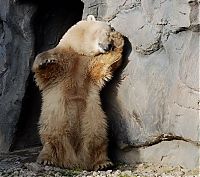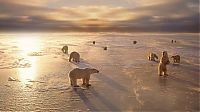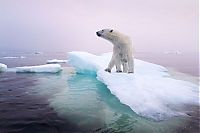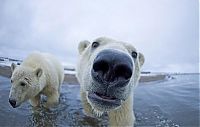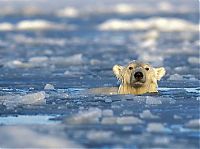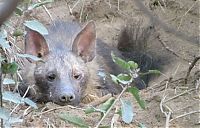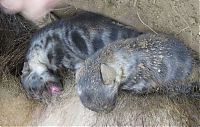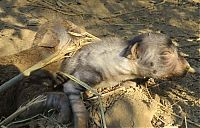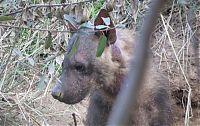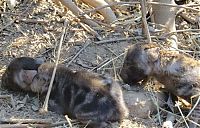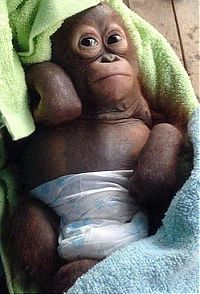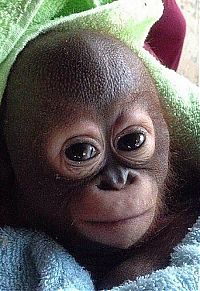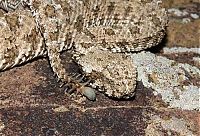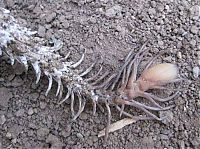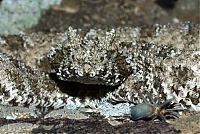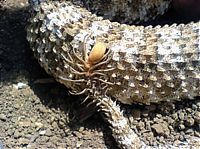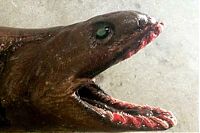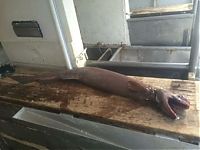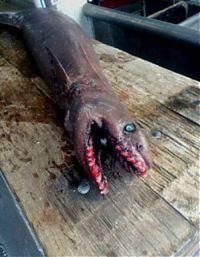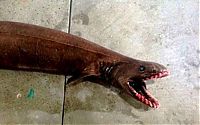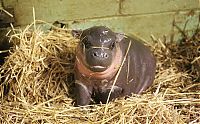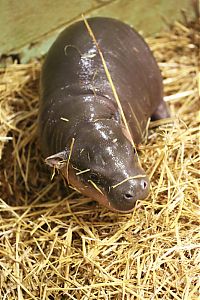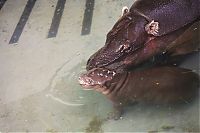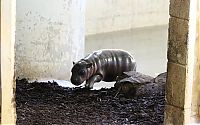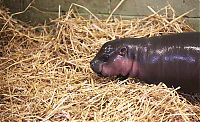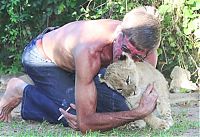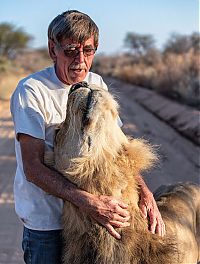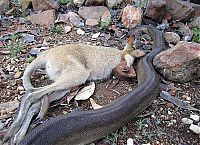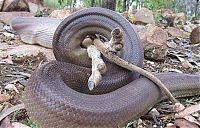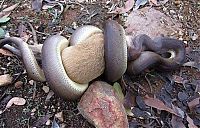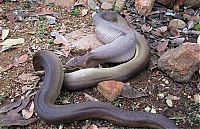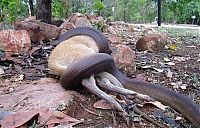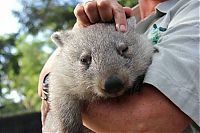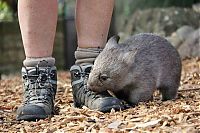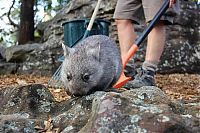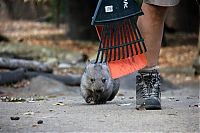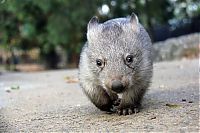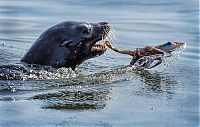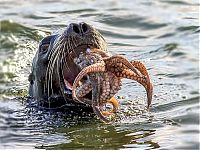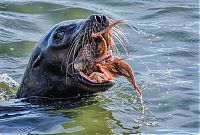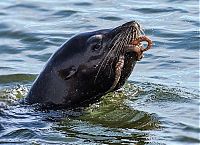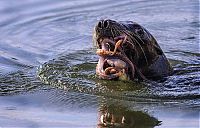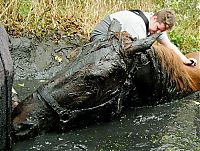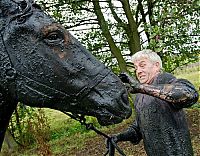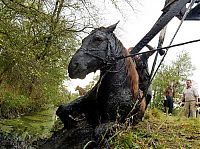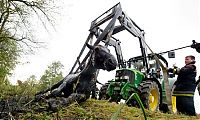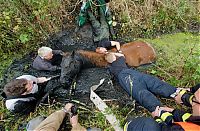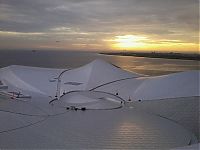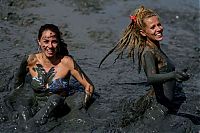Polar Bear Photography
Tuesday, 27th January 2015, 23:50:48
Album: Fauna & Flora, New uploads: 11, Hits: 931, Size: 0MiB
The polar bear (Ursus maritimus) is a bear native largely within the Arctic circle encompassing the Arctic Ocean, its surrounding seas and surrounding land masses. It is the world's largest land carnivore and also the largest bear, together with the omnivorous Kodiak bear, which is approximately the same size. An adult male weighs around 350–680 kg (770–1,500 lb), while an adult female is about half that size...
Rescuing Hyena Cubs
Tuesday, 27th January 2015, 11:00:04
Album: Fauna & Flora, New uploads: 8, Hits: 747, Size: 1MiB
Hyenas or Hyaenas (from Greek "ὕαινα" - hyaina) are the animals of the family Hyaenidae /hɪˈɛnɨdɛ/ of suborder feliforms of the Carnivora. It is the fourth smallest biological family in the Carnivora (consisting of four species), and one of the smallest in the mammalia. Despite their low diversity, hyenas are unique and vital components to most African and some Asian ecosystems...
Nursed Baby Orangutan
Thursday, 22nd January 2015, 23:54:34
Album: Fauna & Flora, New uploads: 7, Hits: 591, Size: 1MiB
Orangutans are the only exclusively Asian genus of extant great ape. The largest living arboreal animals, they have longer arms than the other, more terrestrial, great apes. They are among the most intelligent primates and use a variety of sophisticated tools, also making sleeping nests each night from branches and foliage. Their hair is typically reddish-brown, instead of the brown or black hair typical of other great apes...
Pseudocerastes Urarachnoides
Thursday, 22nd January 2015, 23:49:46
Album: Fauna & Flora, New uploads: 5, Hits: 376, Size: 0MiB
Pseudocerastes is a genus of venomous vipers endemic to the Middle East and Asia. It was originally a monotypic genus created in 1896 by Boulenger for the species Pseudocerastes persicus. Due to taxonomic revision and recent discovery, the genus may currently contain as many as three species.
Pseudocerastes persicus is often referred to as the false horned viper because of the horn-like structures above the eyes that are made up of numerous small scales...
Xenacanthus Prehistoric Shark, Lakes Entrance, Victoria, Australia
Thursday, 22nd January 2015, 00:21:47
Album: Fauna & Flora, New uploads: 4, Hits: 536, Size: 0MiB
Xenacanthus is a genus of prehistoric sharks. The first species of the genus lived in the later Devonian period, and they survived until the end of the Triassic, 202 million years ago. Fossils of various species have been found worldwide.
Xenacanthus had a number of features that distinguished it from modern sharks. This freshwater shark was about one meter (three feet) in length...
Pygmy Hippopotamus
Monday, 19th January 2015, 21:50:44
Album: Fauna & Flora, New uploads: 10, Hits: 867, Size: 1MiB
The pygmy hippopotamus (Choeropsis liberiensis or Hexaprotodon liberiensis) is a small hippopotamid native to the forests and swamps of West Africa, primarily in Liberia and small populations in Sierra Leone, Guinea and Ivory Coast. The pygmy hippo is reclusive and nocturnal. It is one of only two extant species in the Hippopotamidae family, the other being its much larger cousin the common hippopotamus (Hippopotamus amphibius)...
Lion Raised And Friendship With Frikkie Von Solms
Friday, 16th January 2015, 00:18:59
Album: Fauna & Flora, New uploads: 9, Hits: 1113, Size: 1MiB
Frikkie Von Solms (born 1945) is a lion caretaker in Southern Africa. Zion had to be separated from his parents because the caretakers feared his father might kill him.
It goes without saying that you should be careful around lions and other wild animals, but that doesn’t mean that they are un-feeling, cold-blooded killers. Frikkie Von Solms knows this perfectly well: he has spent the last 11 raising Zion, a gentle, tender and loving African lion...
Python Swallows A Whole Wallaby
Wednesday, 31st December 2014, 20:30:37
Album: Fauna & Flora, New uploads: 8, Hits: 1012, Size: 1MiB
A wallaby is any animal belonging to the family Macropodidae that is smaller than a kangaroo and has not been designated otherwise.
Overview
Forest-dwelling wallabies are known as "pademelons" (genus Thylogale) and "dorcopsises" (genera Dorcopsis and Dorcopsulus). The name "wallaby" comes from Dharug 'walabi' or 'waliba'. Young wallabies are known as "joeys", like many other marsupials. Adult male wallabies are referred to as "bucks", "boomers", or "jacks"...
Wombat Orphan Finds A New Family, Taronga Zoo, Sydney, New South Wales, Australia
Tuesday, 30th December 2014, 10:11:10
Album: Fauna & Flora, New uploads: 8, Hits: 1542, Size: 0MiB
Wombats are short-legged, muscular quadrupedal marsupials, native to Australia, approximately 1 metre (40 in) in length, with short, stubby tails. They are adaptable in habitat tolerance, and are found in forested, mountainous, and heathland areas of south-eastern Australia, including Tasmania, as well as an isolated patch of about 300 hectares (740 acres) in Epping Forest National Park in central Queensland...
Seal Having An Octopus Dinner
Tuesday, 30th December 2014, 10:06:12
Album: Fauna & Flora, New uploads: 10, Hits: 1184, Size: 1MiB
The octopus is a cephalopod mollusc in the order Octopoda. Octopuses have two eyes and four pairs of arms, and like other cephalopods they are bilaterally symmetric. An octopus has a hard beak, with its mouth at the center point of the arms. Most octopuses have no internal or external skeleton, allowing them to squeeze through tight places. Octopuses are highly intelligent, and are among the most intelligent of all invertebrates...
Horse Saved From A Deadly Muddy Pond, Radcliffe, Greater Manchester, United Kingdom
Tuesday, 23rd December 2014, 14:07:49
Album: Fauna & Flora, New uploads: 7, Hits: 1146, Size: 1MiB
A horse stranded in a muddy pond was rescued from certain death after firefighters spent more than three hours pulling him on to dry land. The 27-year-old gelding, named Jeremy, was trapped up to his neck in water after wading into thick, cloying mud. He had already been in the farm pond in Radcliffe, Greater Manchester, for a few hours when his owner Jayen Renshaw found him on Monday night...
The Blue Planet, National Aquarium Denmark, Kastrup, Denmark
Thursday, 18th December 2014, 00:05:48
Album: Fauna & Flora, New uploads: 13, Hits: 1790, Size: 1MiB
Denmark's Aquarium (Danish: Danmarks Akvarium) is an aquarium in Denmark. The original aquarium was located in Charlottenlund, but this facility closed in 2012. A new aquarium called The Blue Planet (Danish: Den Blå Planet) opened in March 2013 in Kastrup, a suburb of Copenhagen. Much of the stock from the old aquarium was relocated to this new facility.
The main purpose of the aquarium is to disseminate marine information, help science projects, and help improve educational institutions...
| History | 1 | - | 7 | 8 | 9 | 10 |
|
|
||||||||||||||
